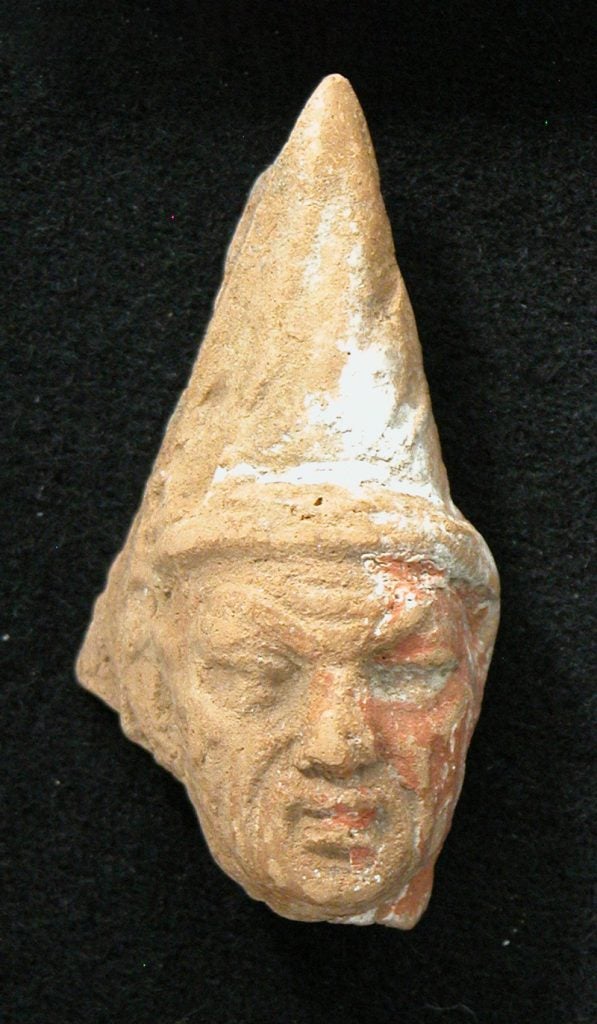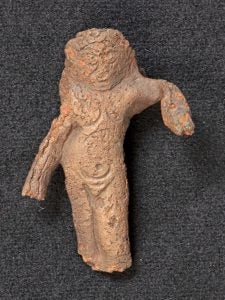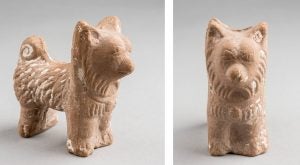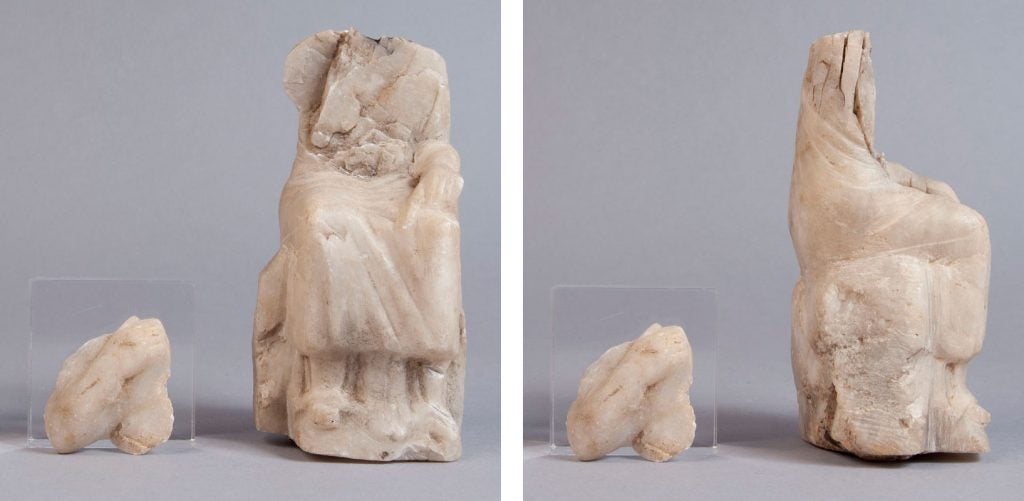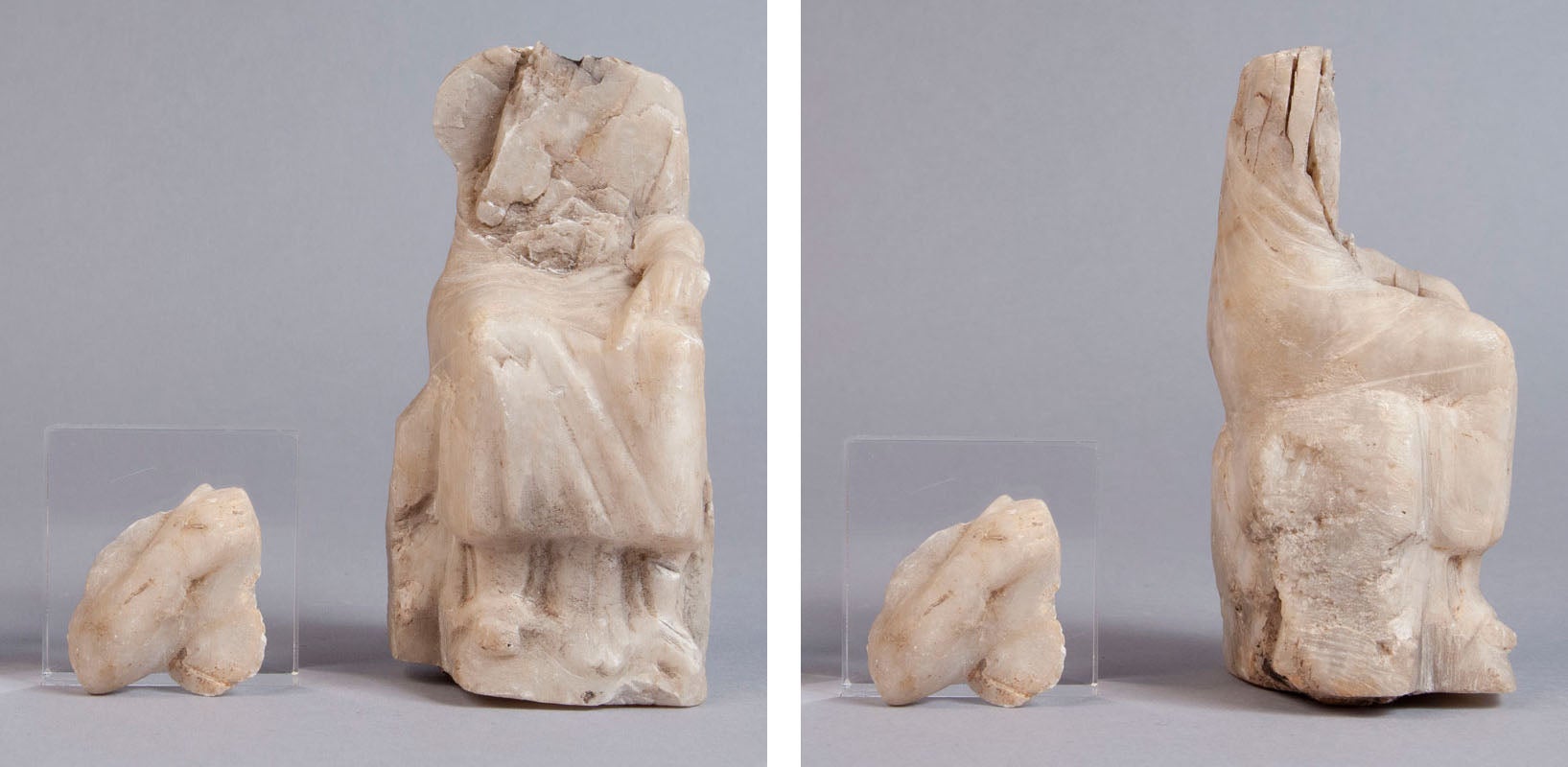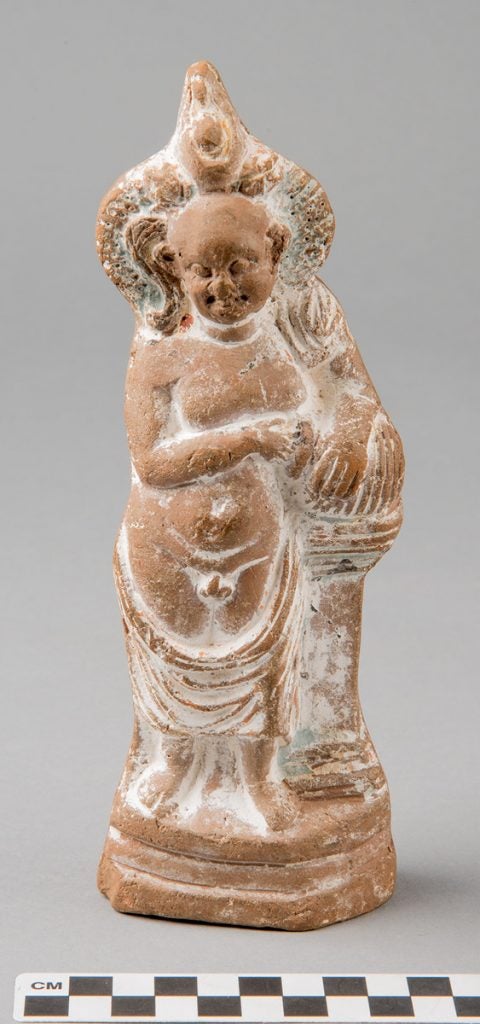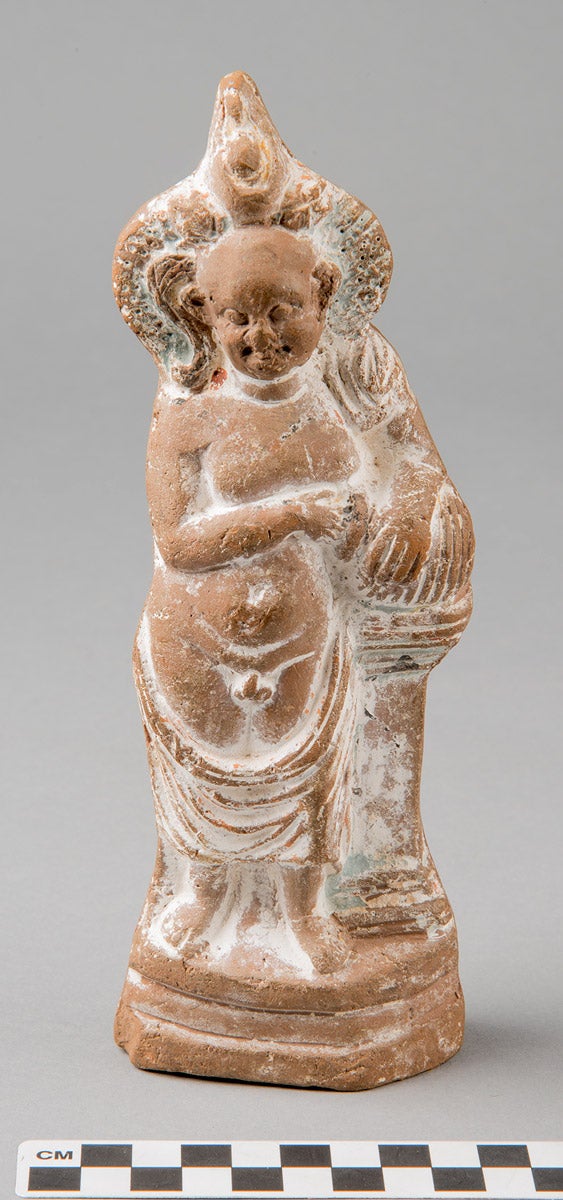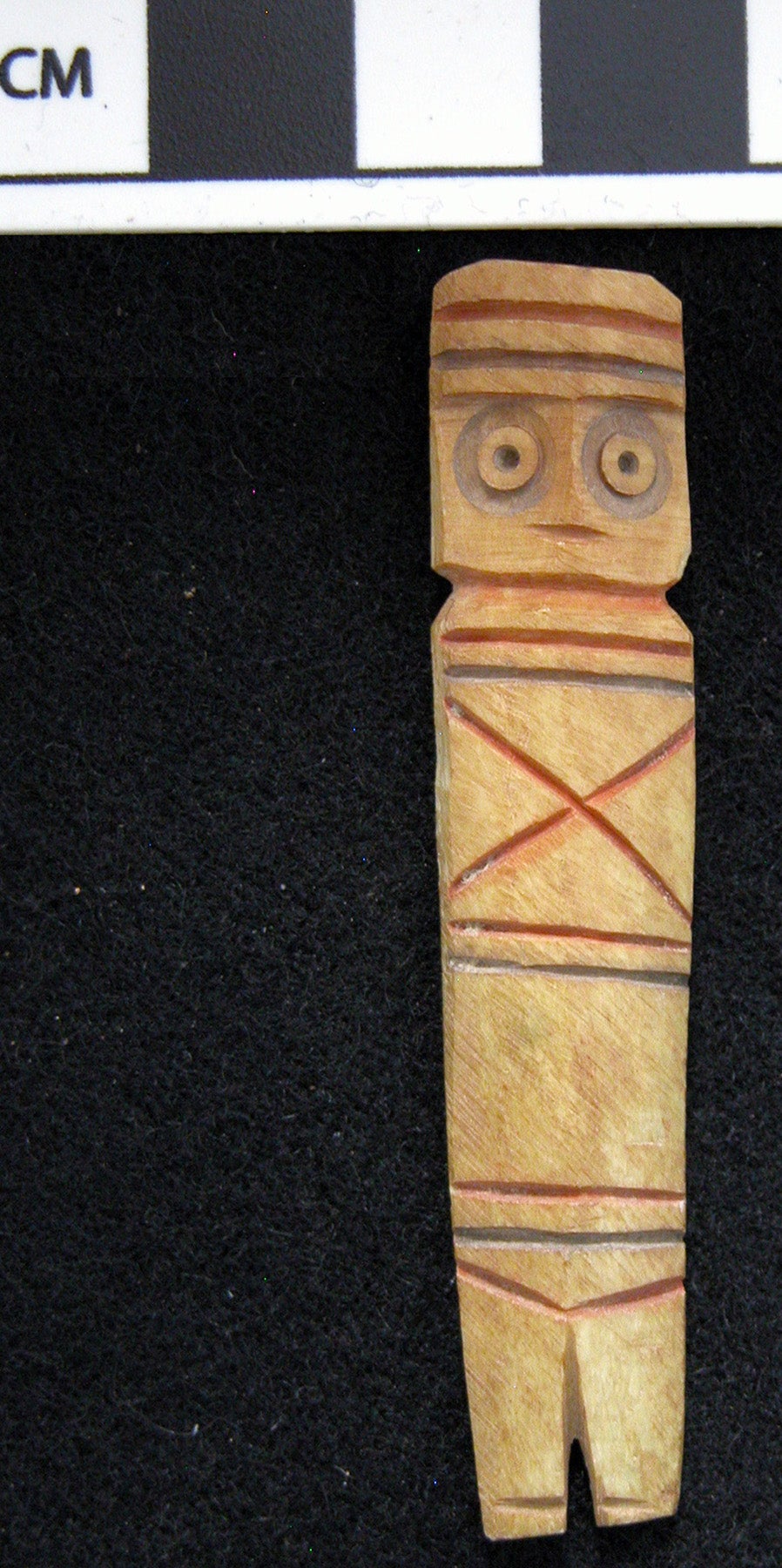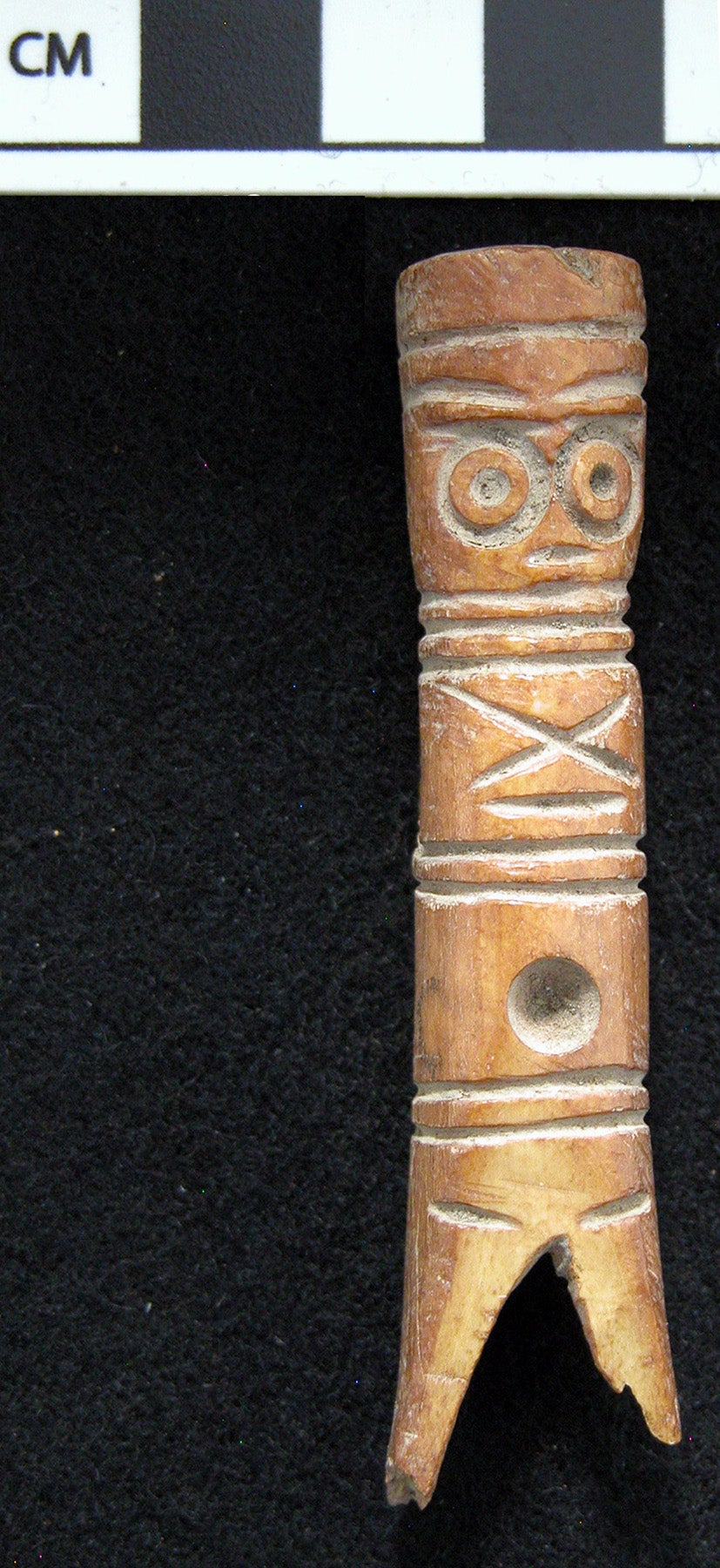Ugly Object of the Month — October 2021
By Laurel Fricker, IPCAA grad student
If you’re still looking for a Halloween costume, I have one for you! This month’s Ugly Object is a stylized Late Roman clay female figurine just waiting to be adapted into a costume. With her outstretched arms, she is interpreted to be an orant. The orans pose is a gesture of prayer often seen in Roman, Byzantine, and Christian art.
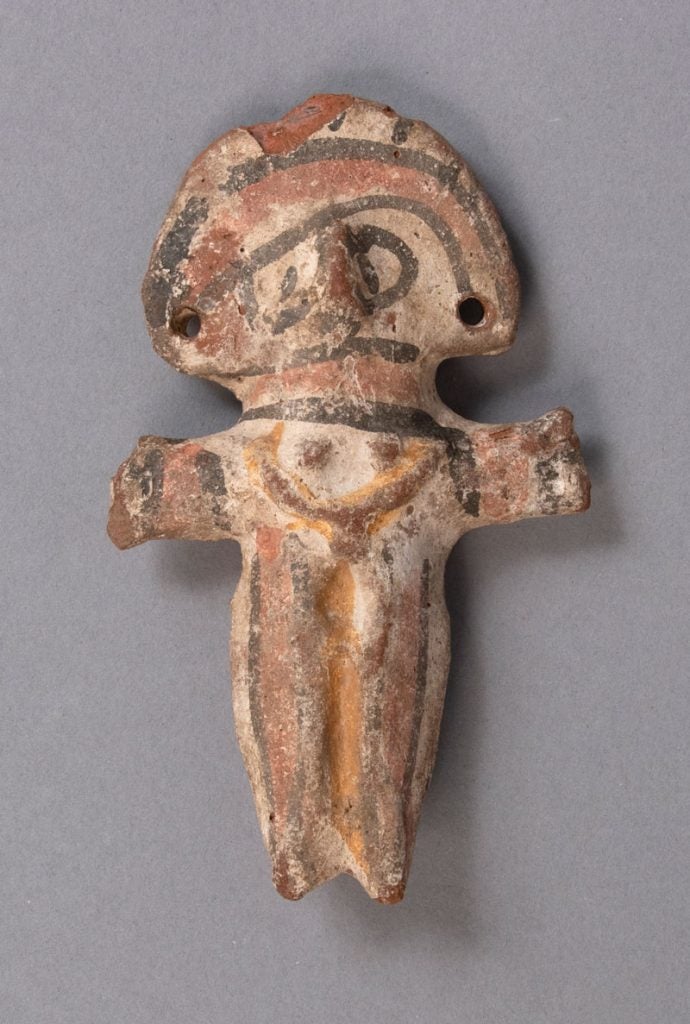
She is a human figurine in the most simplified sense: she has arms, stubby little outstretched things that end abruptly; legs, which start midway down her torso and are only separated by a small yellow-painted channel; and pointed feet. Her head is a flattened half-circle that is connected to her body with a thick neck—which happens to be the same width as the rest of her torso! Most of the features on her face and the rest of her body are painted on, except for her pinched beak-nose and her two knobby breasts. In addition, there is a hole on each side of her head, presumably for earrings that have since been lost.
The painted details are both this figure’s saving grace and a point of comedy. The figurine appears to have been painted all over with a base white paint (calcite-based) with details added in black (carbon-based), red (ochre), and yellow (ochre) paints. Because of the preserved pigments, we can see that she is wearing some sort of red and black headband. However, she is also wearing a painted-on amulet somewhat counter-intuitively below her breasts. Her eyes are hastily drawn simple black circles with a dot in the middle, but one overlaps with her nose and the other is cut off by the black outline of the headband. She seems to be wearing some sort of clothing (at least pants?), indicated by the red bands outlined with black that run down the middle of each leg. Does she have a mouth? It’s hard to say. The trio of black, red, and black lines painted horizontally across her neck could be part of her garment and would accord best with how her clothing is drawn on her legs, but this all makes for a very interesting outfit that sports a gaping hole across her chest (some sort of reverse crop top?). It’s a good thing this figurine hails from Karanis, Egypt, because her attire does not seem to offer much coverage or warmth!
Although she was hastily constructed by hand and seemingly painted with little care, she holds a special place in my heart. Her stubby arms, knobby breasts, and beak-nose are just so silly. To make her into your costume, find a white body- or jumpsuit, grab some red, black, and yellow paint and a couple of brushes, and get to work! Add some costume jewelry—necklace and earrings—and you are good to go.
Ugly Object of the Month — October 2021 Read More »

